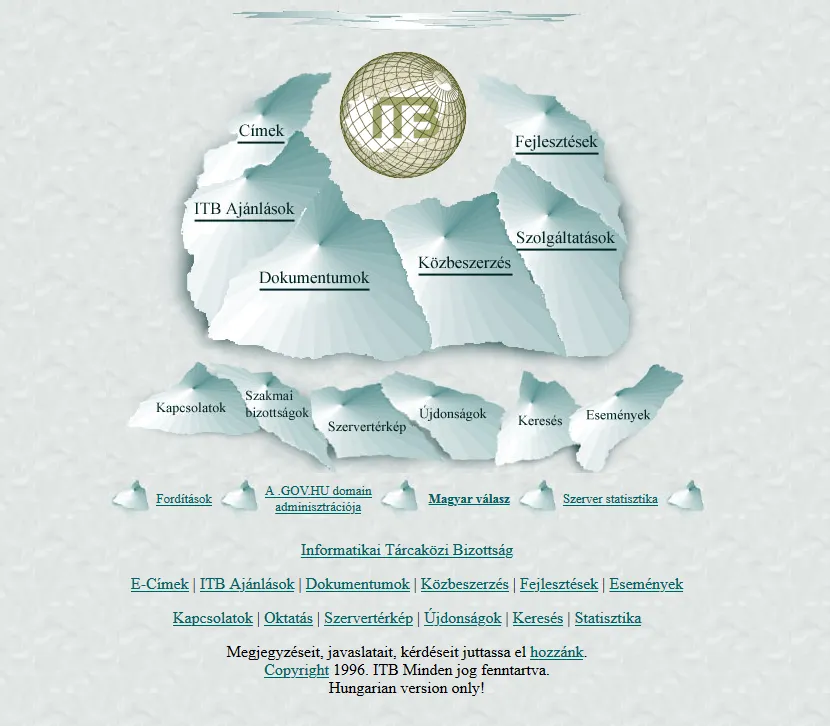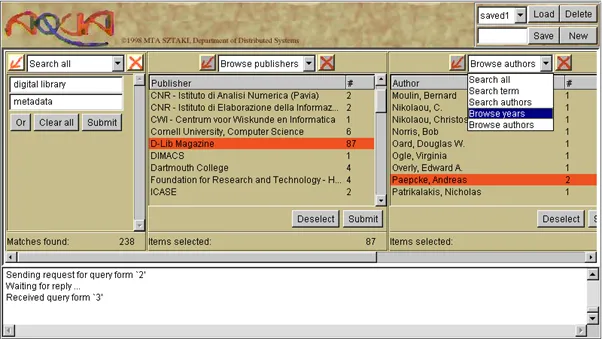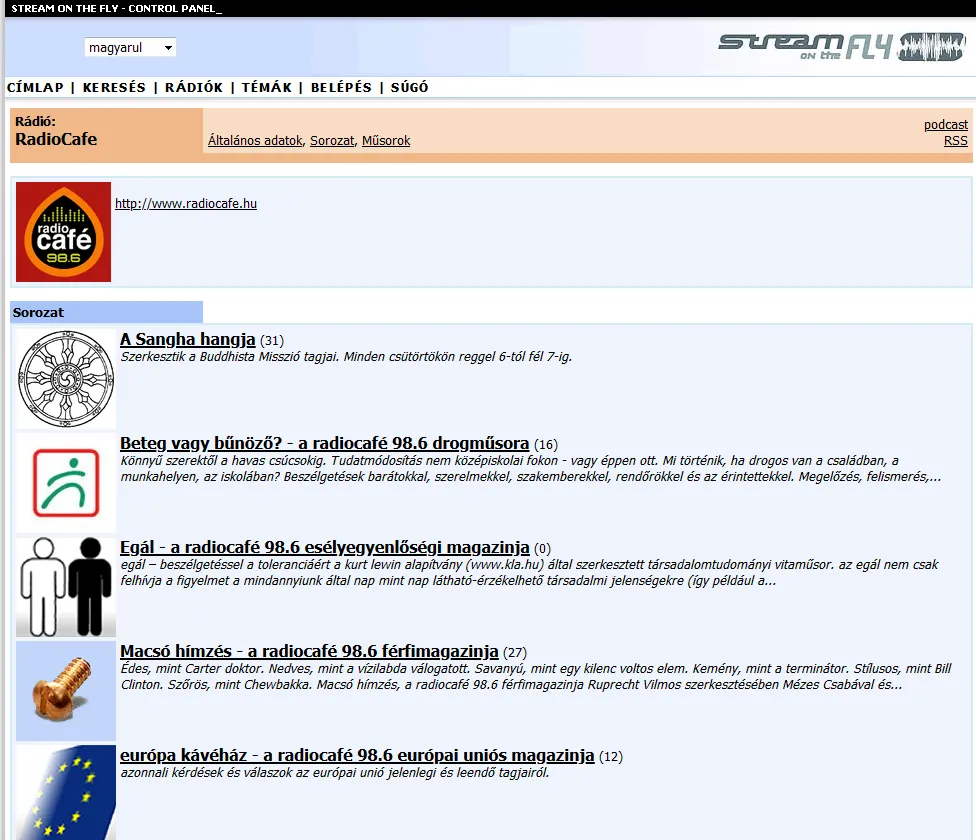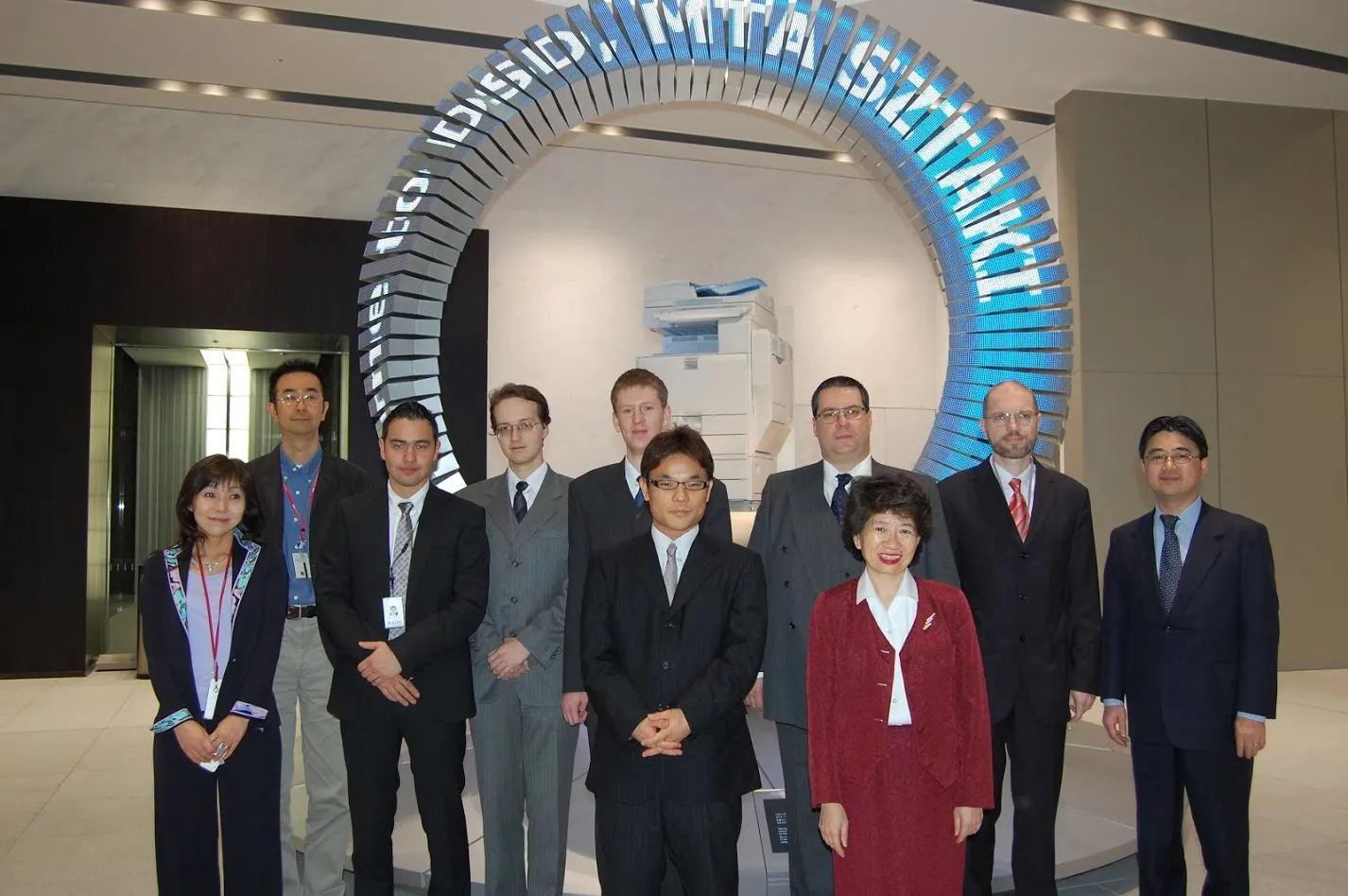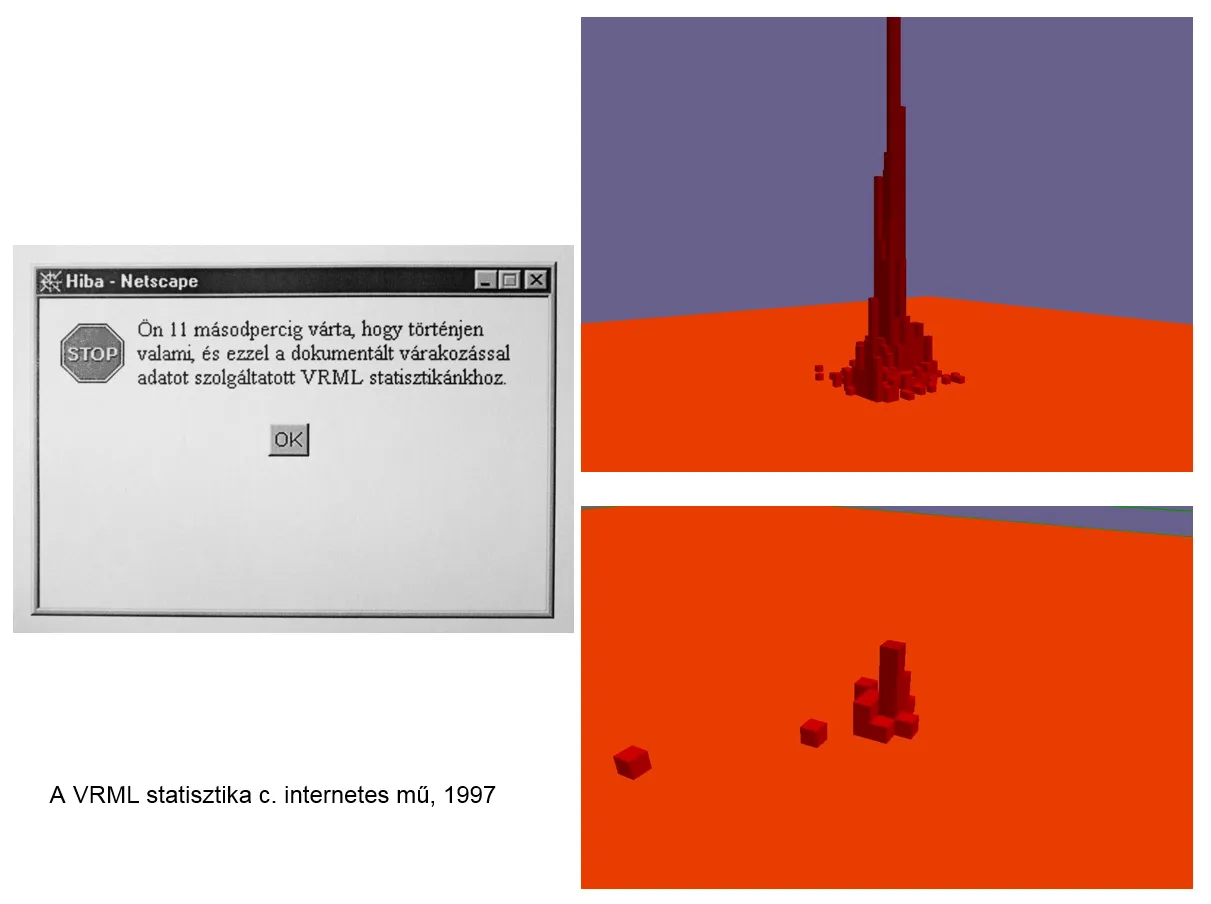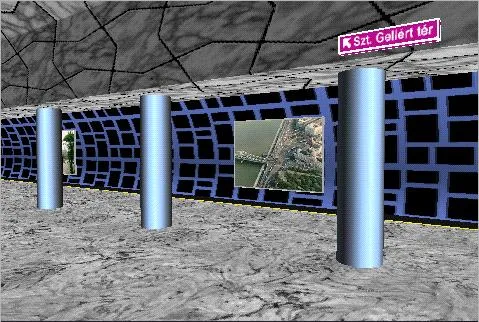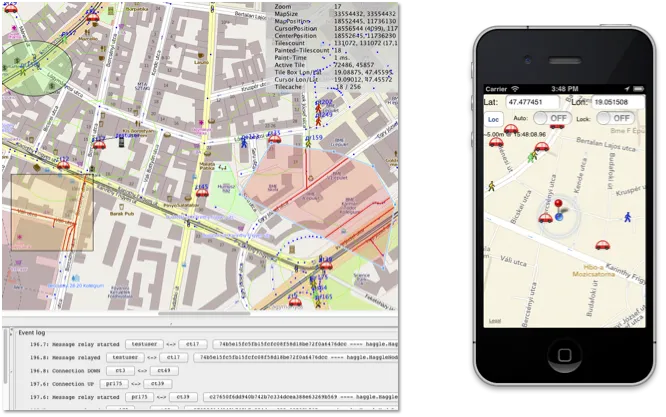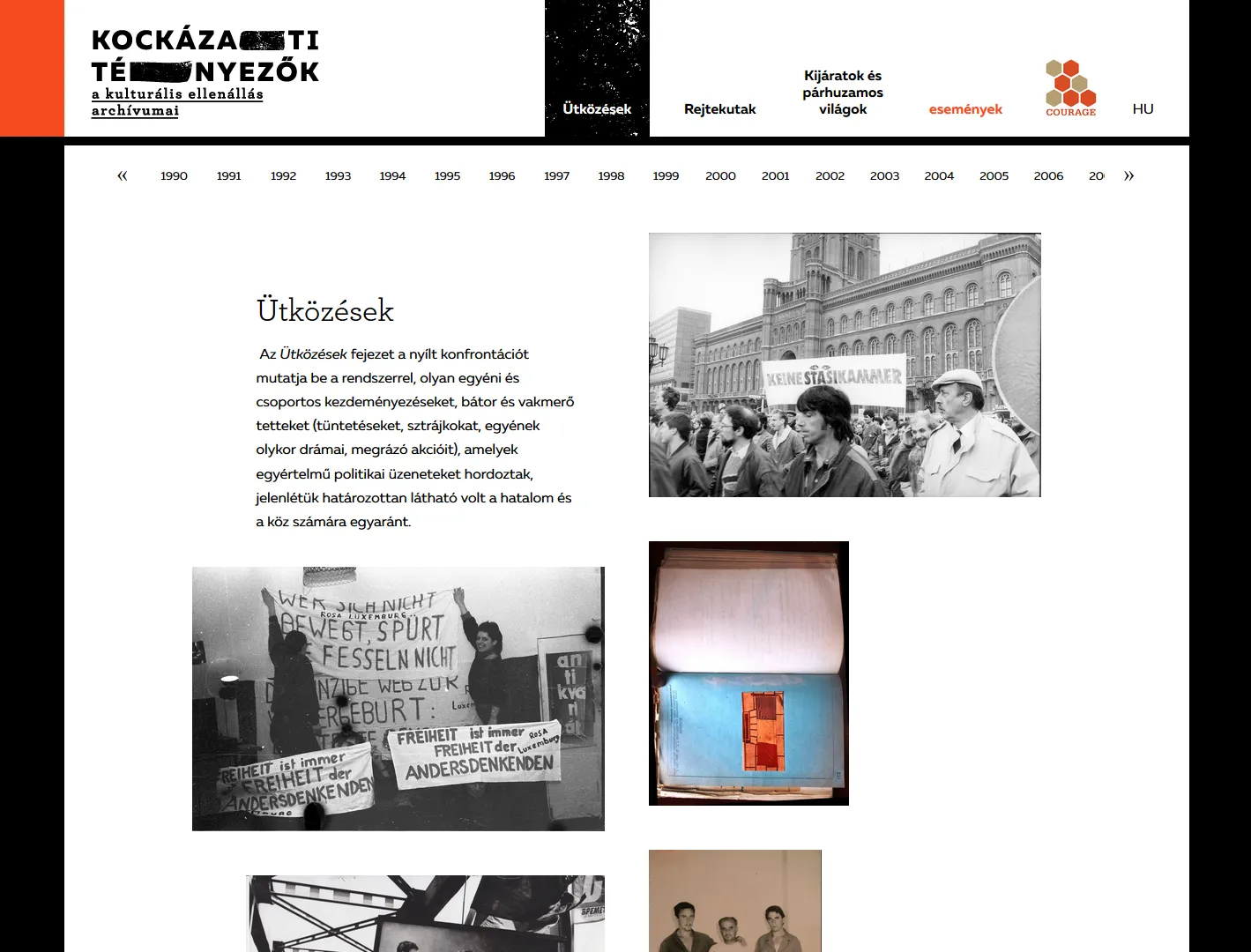The Department of Distributed Systems of SZTAKI, the catalyst of the Hungarian web scene has become 25 years old
The Department of Distributed Systems (DSD) of SZTAKI which has been playing a pioneering role in several fields, like the introduction and adoption of World Wide Web (WWW) technologies in Hungary, was established 25 years ago, in 1994. On this occasion, we present some outstanding projects from the past.
The beginning of the Hungarian web
After launching the first web services in Hungary (e.g. the SZTAKI Dictionary), the first governmental homepages and web portals (like www.kormany.hu, www.kancellaria.gov.hu), the first web-based artistic products, such as the periodical ‘Nightwatch’ or SZTAKI Gallery, the collection of web-based artefacts, the thematic profile of the department has crystallized quickly which characterizes even today their research and development activity. This profile comprises three distinct professional areas, each based on the utilization of web technologies. These are digital libraries and archives, tools supporting groupware and lastly, the Semantic Web. Besides the research and development work being performed in these directions, the department provides web services as well, indispensable for the Hungarian professional community.
Since 1995, the department has been running the World Wide Web Consortium (W3C) Hungarian Office which has the primary aim to continuously disseminate information on the development of web technologies, as well as the most recent international web standards and technical recommendations. Moreover, it promotes the adoption of W3C standardization documents by making many of them accessible to local experts and internet users also in Hungarian on its webpage.
The beginning of the Hungarian digital archives
Simultaneously with the establishment of SZTAKI DSD, the first European NCSTRL (the US digital library network for computer science) hub was set up in 1995 and was switched into the NCSTRL network, thus creating the European access to the entire wealth of full-text publications in computer science available in the US. This solution was presented at the Execom management meeting of ERCIM (The European Research Consortium for Informatics and Mathematics) held in Budapest.
ETRDL (ERCIM Technical Reference Digital Library) was developed in European cooperation where one of the nodes was operated by SZTAKI which was also responsible for building up the link between ETRDL (Europe) and NCSTRL (USA). Later, relying on the technical foundations used for ETRDL, our search engine AQUA was constructed that utilized the method of iterative refinement via facets, based on the early Java applet technology. The product was demonstrated in Amsterdam to celebrate ERCIM’s 10th anniversary.
SZTAKI DSD participated from the very beginning in the DELOS LTR project, an EU Long Term Basic Research programme, the goal of which was to promote and support the European research work aimed at developing digital library technologies. This made it possible to initiate research and development in the field of digital archives in Hungary as well, in conformity with the European research and development efforts in digital library services. Later, SZTAKI DSD was always present in the European researchers’ community working on this topic, e.g. as a member of the DELOS NoE, and DELOS NoE2 (FP4 and FP5) projects, which enabled the department to harness the technologies and technical solutions achieved there, at European level, in numerous subsequent local and international R&D projects.
Community broadcasting
In the project StreamOnTheFly sponsored by the EU, a distributed P2P (peer-to-peer) network of broadcasting archives was developed that met the needs of European small-scale and community broadcasting. Here, the P2P network nodes were able to determine the other nodes they would exchange their metadata with, on the basis of language, region or any other criteria. After its completion, the European network of StreamOnTheFly was operated reliably for over 10 years satisfying the archiving needs of European small-scale and community broadcasting and ensuring the exchange of radio programs between the channels, thus creating a virtual, free-of-charge marketplace for trading and reusing multimedia content.
Apart from the field of broadcasting, SZTAKI DSD has been dealing with other aspects of communities and groupware (CSCW). An example is a novel software product developed together with the company RICOH for office information sharing that provides online knowledge and attempts to automatically optimize the amount of information in a way that would not overload the recipient, however, ensures that important details would not remain unobserved. (The picture below was taken at RICOH headquarters in Tokyo at the project start.)
Underground line 4 in 3D
When working on its first projects related to arts on the web, DSD had already been experimenting with the then recently created VRML (Virtual Reality Modeling Language), a three-dimensional description language and its application in artistic projects.
As a follow-up, at the initiative of the capital Budapest – much prior to the completion of the new underground line – DSD prepared the 3D model of the underground station at Gellért Square. This 3D model was one of the greatest and most complex Hungarian VRML models at that time. Its construction and presentation required a high-performance graphical workstation (SiliconGraphic).
Plagiarism Search
The KOPI Plagiarism Search Portal of SZTAKI was developed in 2004 and has been continuously operating since then. This was the first plagiarism search service in Hungary, which handled Hungarian texts very well and later – in 2011, the first in the world – good-quality plagiarism search was implemented even on translated texts, detecting extracts taken and translated from the English Wikipedia in Hungarian publications.
The first Hungarian common search engine
The OAI-PMH protocol (Open Archives Initiative Protocol for Metadata Harvesting) has been developed with the goal of providing a tool for the common search engines to collect metadata from the searchable digital archives accessible on the net. In Hungary, in a joint project with the National Széchenyi Library called ’Hektár’, a common search service was launched that uses this principle. Its enhanced version is an OAI search service even currently in use and performs data collection from all national full-text publication repositories.
Interpreter glove
With the interpreter glove, SZTAKI DSD’s intention was to provide deaf and hearing-impaired people with a tool that is able to significantly improve their everyday social communication and thus, enhance their quality of life. For this, sensors of movements were mounted on the fingers of the glove, a mobile phone was connected to them that converts the movements of the hand in real-time into verbal communication by reading out the gestures made in sign language.
Simulation of ad-hoc time-tolerant networks
A simulation environment (Chaoster) was developed for examining and testing time-tolerant peer-to-peer networks. These networks are built without any intermediary, by connecting different mobile clients and transmitting the messages within the network created ad-hoc in this way. As part of the simulation environment, an IOS application has been developed, enabling physical mobile phones to appear in the simulated network, thus virtually combining the real and simulated environments. The most relevant application field of ad-hoc networks of this type is natural or societal emergencies, communication in crises when country-wide communication systems are expected to have failures or fall out.
MTMT2 archiving system
One of the most recent developments of SZTAKI DSD is the 2nd version of the MTMT software (The Hungarian Scientific Bibliography) that serves around 60.000 users (of the Hungarian academia and higher education) and maintains the registry of the complete scientific publications of Hungary back up to 2008. This archiving system encompassing science as a whole in a focused way is one of the most sophisticated software systems SZTAKI has ever produced for nationwide use.
COURAGE and the semantic web
SZTAKI DSD started to work on semantic web technology as early as 2004. An intelligent service selector, an SLA (Service Level Agreement) reconciliation tool, an ontology-based execution scheduler, a virtual machine designer, and other software components were developed. In 2011 the SZTAKI Linked Open Data service was launched making the content of the National Digital Repository accessible in the form of linked data. As an add-on, LODmilla linked data browser was also produced enabling the so-called graph-based associative browsing of linked data.
Our last development, within the framework of the COURAGE EU H2020 project, is the COURAGE knowledge graph and its whole comprehensive IT service platform that supported the historical processing and preservation of various forms of the cultural resistance of the past socialist era. The content of the knowledge graph was designed and is still maintained by the experts of the former European socialist countries, and has served as the basis for developing university curricula and organizing virtual exhibitions. This knowledge management system is DSD’s top achievement so far in the area of semantic web technology.
End of the Hungarian web?
After the first 25 years of Hungarian R&D activity in the field of web technologies and more specifically, the pioneering role played by SZTAKI DSD, web technologies count today the mainstream technologies, and modern 21st-century social life, anywhere in the world, is inconceivable without them. However, research and development has not stopped in this area. On the contrary, increasing the complexity of the technologies and simultaneously, efforts to simplify them, go on hand in hand. SZTAKI DSD being the active protagonist of both trends will certainly remain so in the coming 25 years as well.

